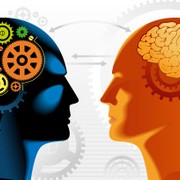As artificial intelligence (AI) continues to establish itself in the technology space, its subset – machine learning (ML) is making strides to help set a pace for greater success. From major corporations to startups, ML teams are continuously working to deploy products that improve the way we work and live. Aparna Dhinakaran CPO at Arize AI, shares an article on Forbes predicting key AI trends we’ll see in 2023.
- Generative AI Will Go Mainstream (and So Will Its Growing Pains). “With powerful applications like Github Copilot and ChatGPT already proving valuable, many companies are eager to embrace the technology more broadly. However, generative AI remains a wild west. There is a lot to unpack over the course of the next year around bias, copyright, scalability, security, and how to monitor this new technology. In short, generative AI will take a village – and we need to build that village.”
- Economic Uncertainty Will Be a Crucible for the ML Infrastructure Market. “AI is likely to take on elevated importance as inflation and economic turbulence put pressure on companies to deliver greater efficiency and productivity. Given shifting priorities, the days of central ML teams taking months or years to build and maintain proprietary feature stores or monitoring tools in-house are likely numbered. Buying over building will likely become more common, particularly as teams need to prioritize projects that move the needle on revenue in the near term.”
- Best-of-Breed Platforms Will Chip Away At Legacy Players. “It happened in DevOps and now it’s happening in MLOps: in technical fields, best-of-breed platforms tend to win the day. Given the complexity of modern machine learning, ML teams are demanding more depth from tools at each stage of the model lifecycle. As a result, end-to-end platforms that emerged a decade ago to empower both citizen data scientists and ML teams are losing developer-share and undergoing layoffs.”
- Working With Unstructured Data Will No Longer Be Optional. “Over the past few years, some of the most powerful modern applications of machine learning – from large language models like ChatGPT to computer vision models that can detect cancer or rare medical disorders – leverage unstructured data. Any ML platform that is not built to handle unstructured use cases risks irrelevance or limited growth prospects. At the same time, ML teams that find ways to harness computer vision or NLP models – even if only applying a pre-trained model to a narrow business use case – may find new competitive advantages.”
While any technology can be unpredictable, there is much to be optimistic about when it comes to the future of AI and ML.
For Full Article, Click Here


